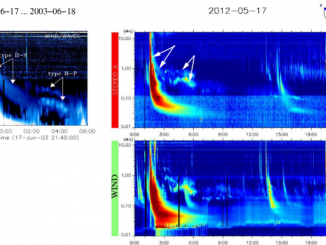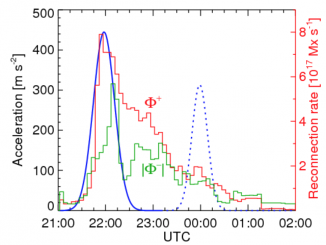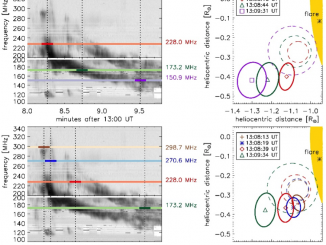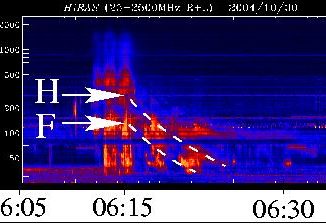Synchrotron or not – analysis of two-part type II bursts by Silja Pohjolainen
A distinct class of interplanetary (IP) type II bursts that show single-lane, wide-band diffuse emission has been identified, but how these bursts are formed is still unclear. The radio burst on June 17-18, 2003 was analysed by Bastian (2007) , who suggested that the wide-band and diffuse part of the burst (type II-S in Fig. 1) could be due to synchrotron emission. The later part of the burst (type II-P) […]








